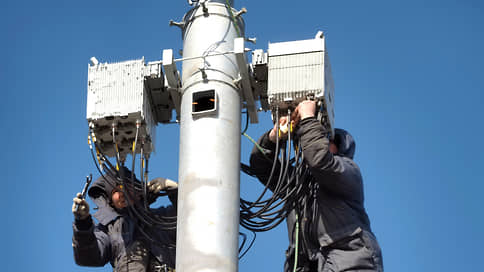Rostelecom is in no hurry to build towers
[ad_1]

Rostelecom (MOEX: RTKM) will be able to postpone until 2026 the installation of LTE communication equipment on the towers of the Russian Television and Radio Broadcasting Network (RTRS) as part of connecting socially significant objects to the Internet. But in the end, the company will have to finance the project from its own funds. Analysts estimate the necessary investments at 9 billion rubles, although “no one yet has any idea how much domestic equipment could cost.” The company itself only cautiously hopes that it will appear on the market by 2026.
The Ministry of Digital Development has granted Rostelecom a deferment for the installation of 4G base stations (BS) at RTRS facilities. We are talking about using RTRS towers as tower infrastructure for a telecom operator as part of a program to connect socially significant facilities to the Internet. Initially, the base stations were supposed to be installed before 2024, but now the deadline has been set for 2026, as follows from the protocol of the Main Commission on Radio Frequencies (SCRF) dated March 29. The document states that the project is one of the conditions for Rostelecom’s use of radio frequencies.
RTRS has a monopoly on terrestrial broadcasting of terrestrial television and distributes public digital television channels of the first and second multiplexes. Back in 2018, the authorities planned to launch a third multiplex, but it never started operating. RTRS towers also house LTE base stations of the Tele2 operator (owned by Rostelecom) as part of a project to provide communications to small and remote settlements. 5.5 thousand communication objects are involved in the RTRS network, as follows from the report on the financial and economic activities of the organization for 2022.
In 2019, the government appointed Rostelecom as the sole contractor for connecting socially significant facilities via wireless communication channels and laying fiber-optic communication lines (FOCL) to RTRS facilities. According to the unified government procurement portal, in 2019–2020 the Ministry of Digital Development signed two contracts with the company to connect RTRS facilities to fiber-optic lines for a total amount of 6.9 billion rubles. In 2023, Cnews, citing the federal Information Infrastructure project, reported that funding for connecting RTRS facilities was reduced by 26%. The total project budget in 2019–2024 was about 73 billion rubles.
Meanwhile, the decision of the SCRF dated March 29 states that Rostelecom should install the BS at the expense of its own investment program. In 2026–2030, the company is obliged to install at least 500 BS per year, in total at least 2012 stations. The Ministry of Digital Development and RTRS did not respond to requests.
Rostelecom confirmed to Kommersant that they received a deferment: “During this time, domestically produced base stations should appear.” Rostelecom did not specify the volume of investments in the project, since “there is no cost for domestic stations,” but they said that “from 2026, base stations will be installed at the company’s expense.” She owns 51% in the Bulat company, which is developing communication base stations as part of the road map “Modern and promising mobile communication networks for the period until 2030.” Also, in February, Rostelecom established a joint venture with the Scientific and Technical Center Proteus to develop a 5G mobile communications core (see Kommersant on February 7).
Alexey Boyko, an analyst at the specialized Telegram channel abloud62, estimates Rostelecom’s investments in the project at 5–9 billion rubles, stipulating that “no one yet has any idea how much domestic equipment could cost.” According to current market estimates, we can talk about amounts 1.3–2 times higher than the cost of foreign base stations, that is, about 5 million rubles. per piece, Mr. Boyko clarified. But the price could “change greatly due to rising component costs,” he warns, and the investment also depends on the additional infrastructure required.
[ad_2]
Source link





